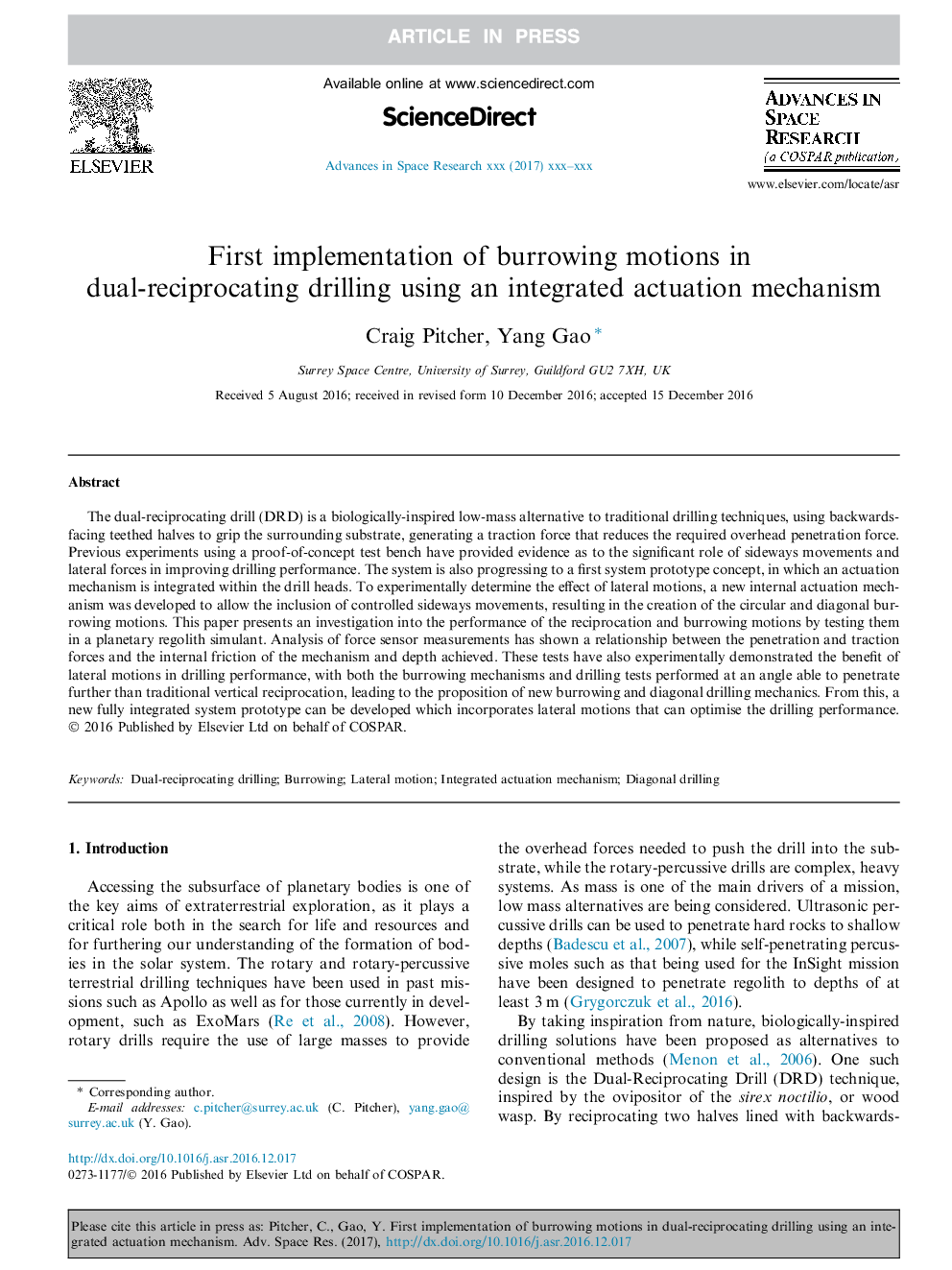| Article ID | Journal | Published Year | Pages | File Type |
|---|---|---|---|---|
| 5486265 | Advances in Space Research | 2017 | 13 Pages |
Abstract
The dual-reciprocating drill (DRD) is a biologically-inspired low-mass alternative to traditional drilling techniques, using backwards-facing teethed halves to grip the surrounding substrate, generating a traction force that reduces the required overhead penetration force. Previous experiments using a proof-of-concept test bench have provided evidence as to the significant role of sideways movements and lateral forces in improving drilling performance. The system is also progressing to a first system prototype concept, in which an actuation mechanism is integrated within the drill heads. To experimentally determine the effect of lateral motions, a new internal actuation mechanism was developed to allow the inclusion of controlled sideways movements, resulting in the creation of the circular and diagonal burrowing motions. This paper presents an investigation into the performance of the reciprocation and burrowing motions by testing them in a planetary regolith simulant. Analysis of force sensor measurements has shown a relationship between the penetration and traction forces and the internal friction of the mechanism and depth achieved. These tests have also experimentally demonstrated the benefit of lateral motions in drilling performance, with both the burrowing mechanisms and drilling tests performed at an angle able to penetrate further than traditional vertical reciprocation, leading to the proposition of new burrowing and diagonal drilling mechanics. From this, a new fully integrated system prototype can be developed which incorporates lateral motions that can optimise the drilling performance.
Keywords
Related Topics
Physical Sciences and Engineering
Earth and Planetary Sciences
Space and Planetary Science
Authors
Craig Pitcher, Yang Gao,
